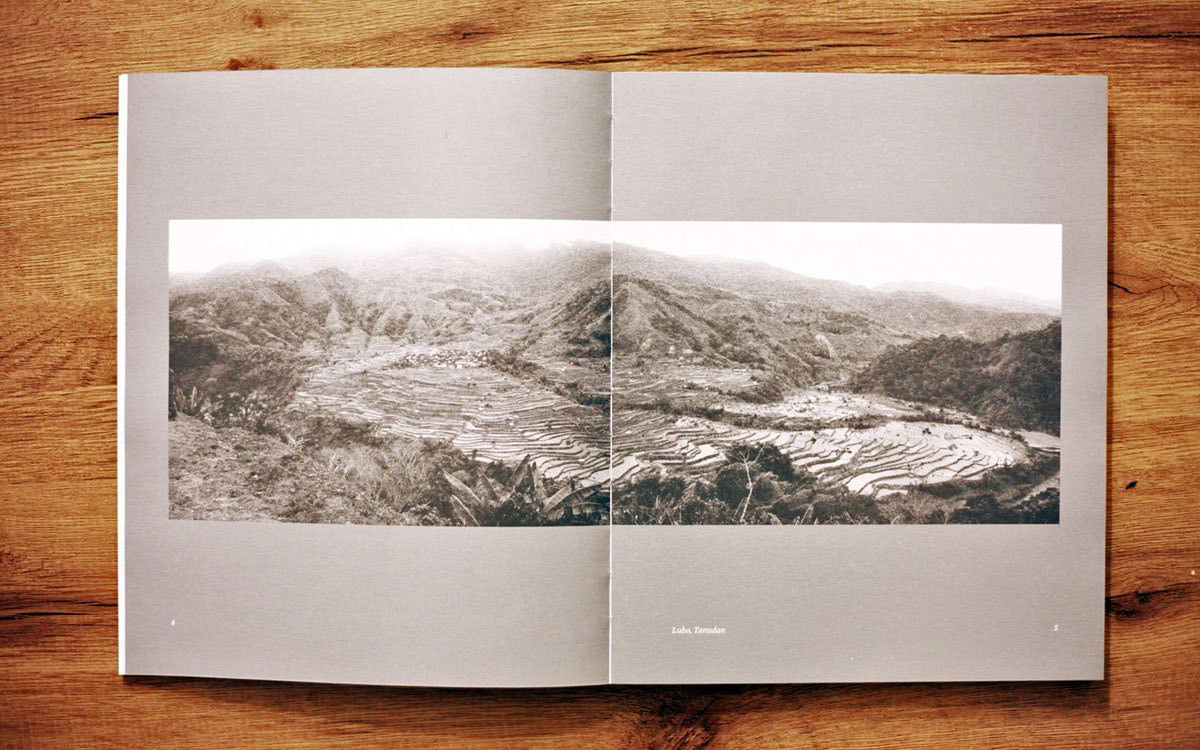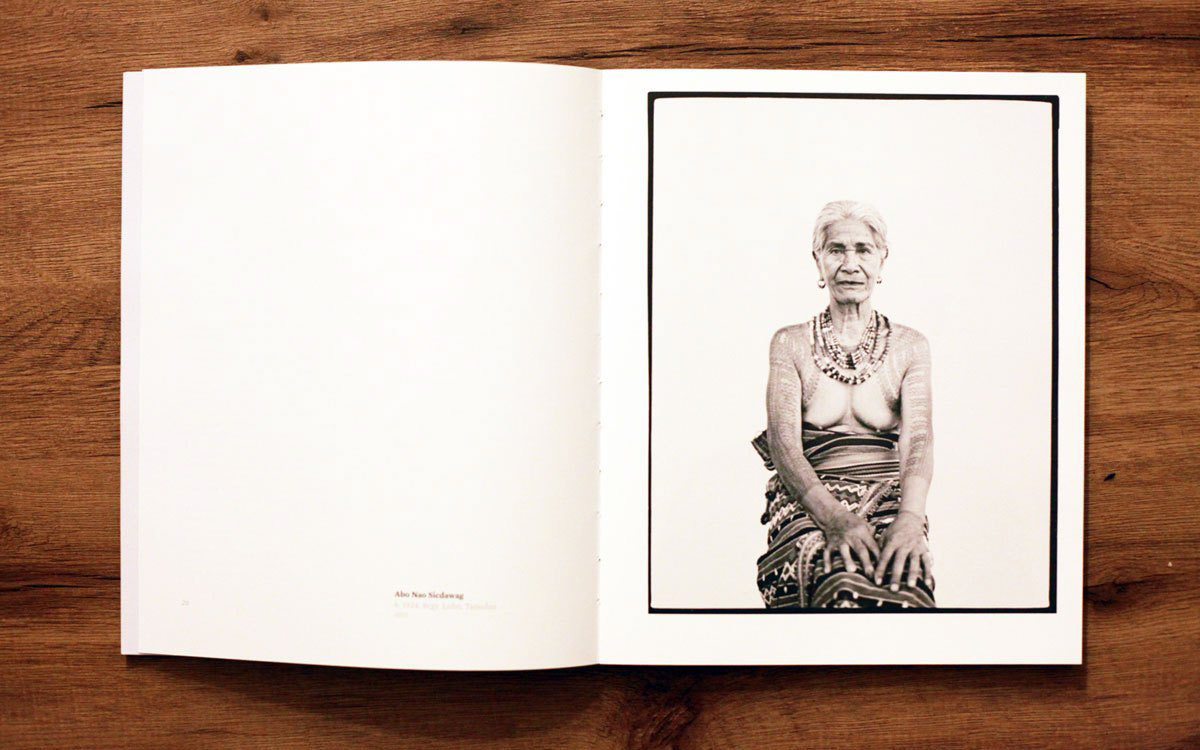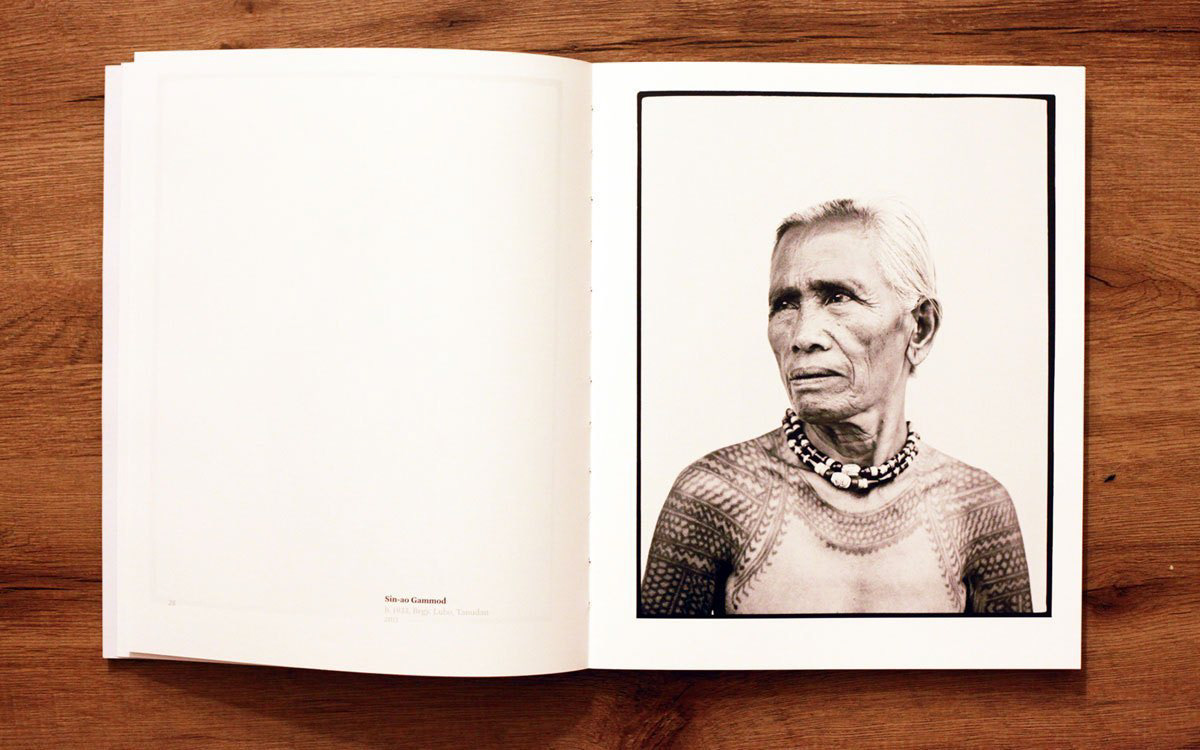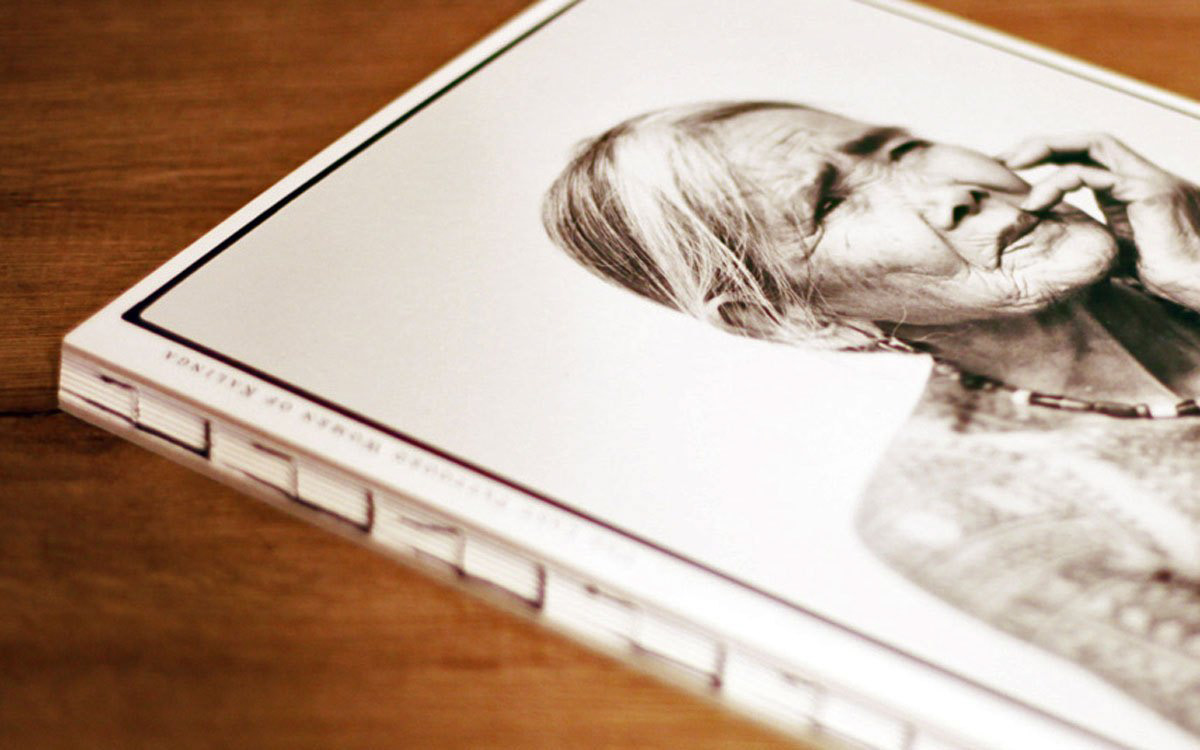
The Last Tattooed Women of Kalinga
An important document of the art of indigenous tattooing in the northern Philippines
Publisher: Silverlens
Photographer: Jake Verzosa
Book dimensions: 8.25 × 10 in
Year: 2014
Photographer: Jake Verzosa
Book dimensions: 8.25 × 10 in
Year: 2014
Winner, Steidl Book Award Asia 2016


About the book
A photobook of portraits documenting the last generation of women from indigenous communities in Kalinga, northern Philippines, whose bodies are extensively adorned with traditional batok tattoos.


Design notes
The portraits are printed on a semi-coated stock, giving it a slight sheen without the distracting glare of gloss, closer to the feel of the authentic gallery prints. The black-and-white images are rendered in a subtle duotone for a deeper tonal range. The spacious layout allows the reader to appreciate the portraits one at a time, contextual details placed discreetly on the facing page. The accompanying essays and visual glossary are printed on a gray-toned matte stock to differentiate. The cover is simple, dominated by an iconic image of the famed mambabatok Whang-ud, making the book itself an object worthy of display.


Publisher's description
The Last Tattooed Women of Kalinga presents a series of portraits by Jake Verzosa who laments and celebrates a dying tradition of tattooing in villages throughout the Cordillera mountains in the northern Philippines. For nearly a thousand years the Kalinga women have proudly worn these lace-like patterns or batok on their skin as symbols of beauty, wealth, stature and fortitude. Applied as part of a painful ritual, the vivid tattoos—abstractions of motifs such as ferns, rice bundles, centipedes and flowing rivers—reflect a rite of passage and a powerful bond with nature. Yet today this intricate form of self-adornment has largely been abandoned due to changing aesthetic perceptions.
Between 2009 and 2013, Verzosa traveled extensively to document the last generation of women with the batok. The resulting pictures reveal the artistic designs of the tattoos, as well as their symbolic functions as signs of social belonging and testimonies to personal struggle and triumph in which the skin becomes a “story.” Accompanying Verzosa’s portraits is a detailed illustrated glossary of the tattoo types and their meanings.
—Steidl, 2017


“It’s at one hand historical and on the other
a sort of poetry unfolding as a record for posterity.”
a sort of poetry unfolding as a record for posterity.”
—Suzy Menkes, editor, Vogue International

Tattoo-inspired binding
The open-case binding and the raw board edges give a rough texture to the book, echoing the rugged beauty of the tattoo tradition's mountain environment. The exposed black thread recalls the soot-based ink that is embedded into the skin, the dark lines displayed proudly like one would a traditional tattoo.


For me, good design is honest, straightforward, unobtrusive and long-lasting. Personally I did not know everything about the publishing process so I was at peace knowing that Karl had the experience and skill to make it all happen.
—Jake Verzosa, photographer

Installation views from Secret Lives of Books: Karl Castro, Book Designer, solo exhibition at the Ayala Museum, 2016. The book was displayed alongside the original photographs by Jake Verzosa, my own photographs of the tattoo tradition, as well as Kalinga artifacts that give deeper context to the women's adornment.



Bead assemblages (pilakid) are precious heirloom pieces in Kalinga culture, and like tattoos are worn as symbols of status. Food bowls made of incised coconut shell bear patterns similar to the tattoos. Gallery Deus collection.
Related links
Buy the new Steidl edition at artbooks.ph (Philippines) or Steidl (rest of the world)
Official site: Jake Verzosa
Official site: Jake Verzosa
Credits
Illustrations: Christina Dy
Book photographs: Jake Verzosa




